From your shoes to your company’s logo, color choices matter. The right color combination can look attractive and sophisticated, while the wrong color can be dull or, worse yet, create an unsightly clash. Designers rely on color to make their creations pleasing to the eye, attract attention or send a message. A rare few are blessed with an intuitive understanding of color harmony. The rest of us need practice to develop color sensibility. Whether you’re a natural or a learner, anyone can benefit from understanding the principles of color theory. The ten tutorials below, ranked from fastest to most in-depth, will help you learn the rules, terminology and tips for color mixing, pairing and designing success.
1. Worqx: Color Theory Overview
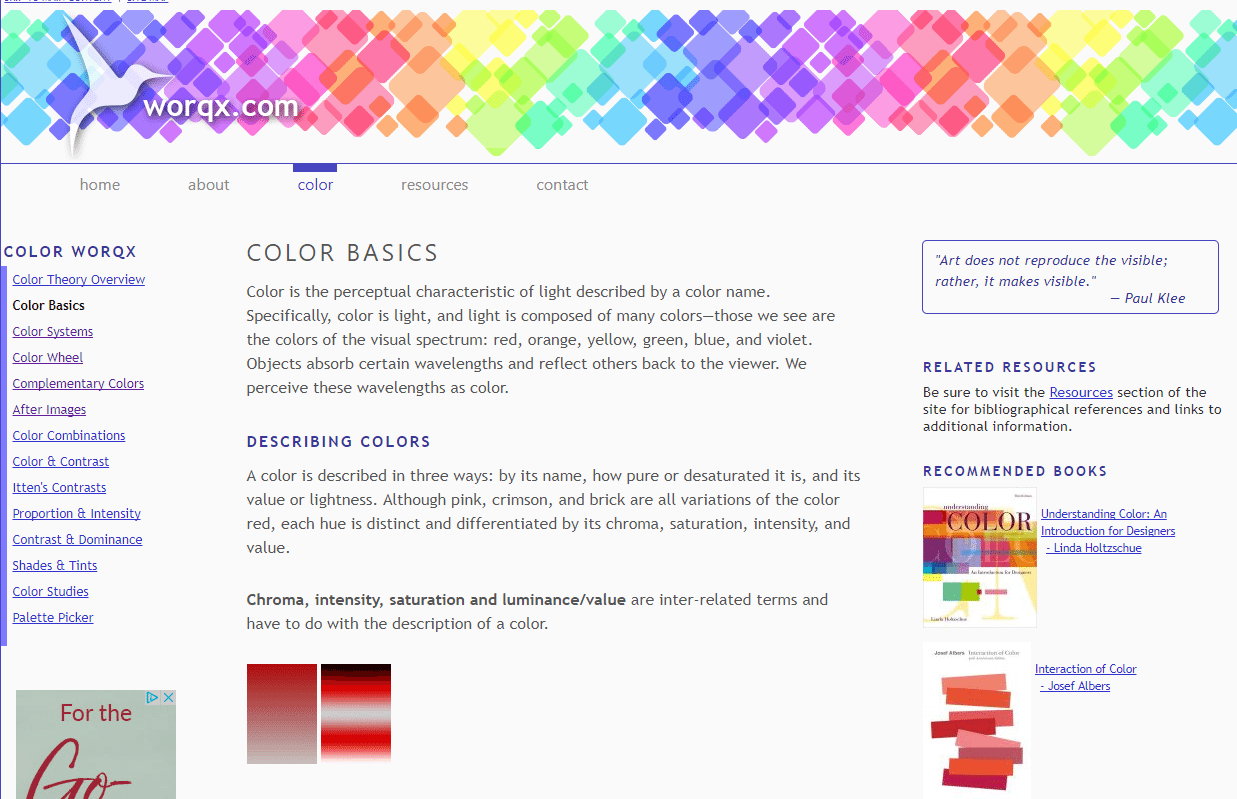
Worqx’s “Color Theory Overview” is the fastest of our featured tutorials, which users can read through in approximately 20 minutes. Lessons are broken up into topics like “Proportion and Intensity” and “Contrast and Dominance.” The tutorial covers terminology in depth, and touches on the history of color and design, from Johannesburg Itten to Bauhaus. The strength of this tutorial lies in its use of images. The same abstract composition is repeated throughout, with alterations made to its component colors based on each topic, allowing readers to not only see what is meant by concepts like “tints and shade” but to easily see how they affect a composition. The tutorial concludes with a Palette Picker design tool. Users pick shades from a palate to drop into a geometric composition. For designers hoping to develop an intuitive understanding of color, this is an excellent tool for hands-on, open-ended experimentation with color.
2. Lifehacker: Learn the Basics of Color Theory to Know What Looks Good
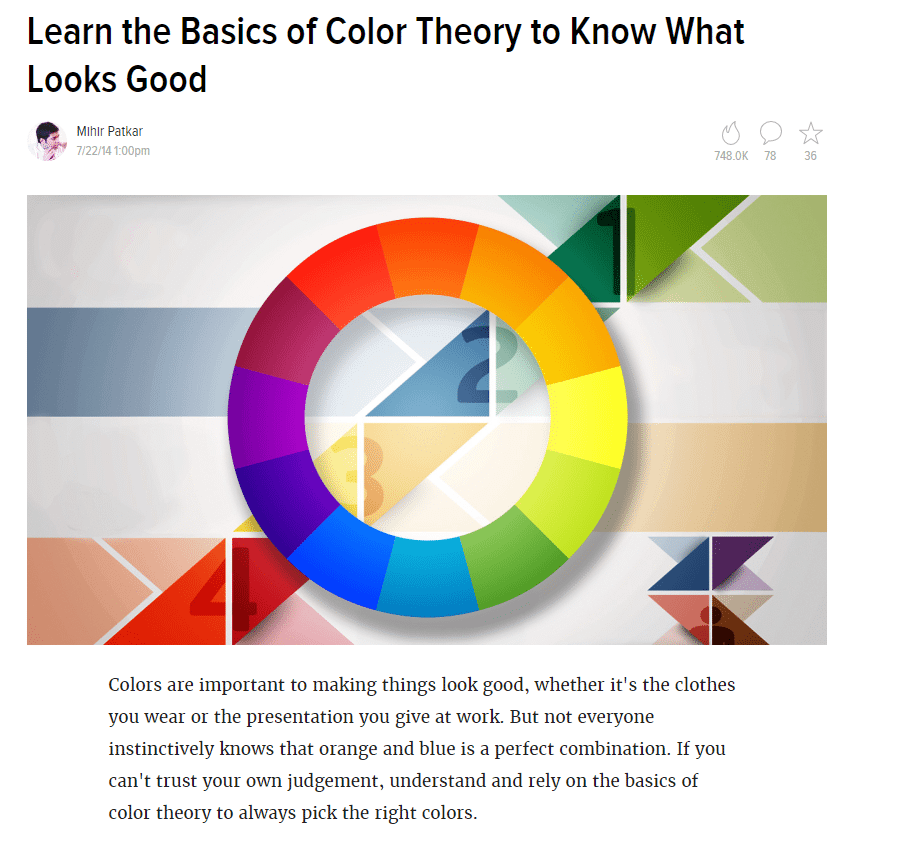
Lifehacker.com is famous for creative problem-solving tutorials, and the site’s “Learn the Basics of Color Theory to Know What Looks Good” is no exception. The entire course can be completed in about 20 minutes. The tutorial instructs readers in how to use color to achieve a few specific, everyday goals, such as choosing flattering clothing or designing readable presentations, according to principles of color. The tutorial is organized by steps, starting with “Learn the Color Wheel” and ending with “Apply Color Theory in Everyday Life”. This is the ideal tutorial for readers who want to skip over the theory and jargon and get straight to using color effectively. The tutorial provides a number of shortcuts in the form of color selection apps and quick tips from design experts (i.e. “start by choosing your boldest color and choose the others with that one in mind”). The text is richly embedded with links to related topics, such as the psychology of color and the best shade of paint for each room.
3. Creativebloq: How to Master Colour Theory
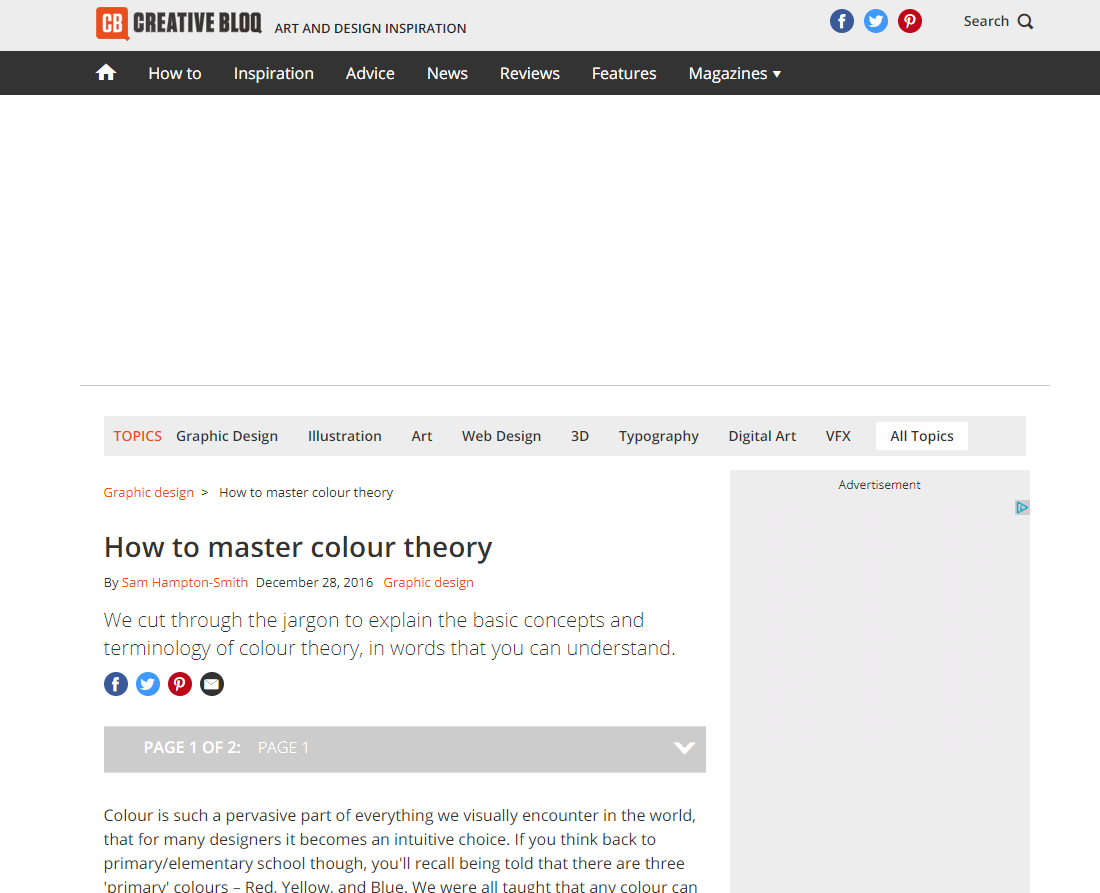
Creativebloq.com’s “How to Master Colour Theory” is an equally succinct crash course in color, which covers color theory history, basic concepts and application. About 20-30 minutes is sufficient for most readers to complete the entire lesson. The tutorial, “cut[s] through the jargon to explain the basic concepts and terminology of colour theory, in words that you can understand.” Written in simple, direct language, this a great resource for those without an academic design background who wish to quickly grasp the fundamentals of color. Several references to digital applications of color, such as the color gamut for screens, make Creativebloq’s tutorial good for digital designers, artists or simply those ready to improve the look of their PowerPoint presentations. The tutorial is organized by topic and covers such subjects as “The Three Components of a Color” and “Additive vs. Subtractive Color”. A few simple, well-chosen illustrations make the concepts clear without overwhelming the reader with extraneous information.
4. Udemy: Learn the Secrets of Successful Color Mixing for Painters

Geared towards fine artists, Udemy’s “Learn the Secrets of Successful Color Mixing for Painters” takes a painterly approach to color, specifically honing in on the tricky art of color mixing. Every kindergartener knows that”yellow and blue make green”>, but everyone who has dabbled in painting know that the right shades and proportions of each are needed to create an attractive hue. Udemy’s tutorial guides learners through a series of hands-on color mixing exercises. Learners will need a few basic colors of paint to get started: two reds – cadmium red & alizarin crimson; two blues – ultramarine and cerulean; two yellows – cadmium yellow and lemon yellow; and two earth colors – burnt sienna and raw sienna, (or yellow ochre). The course consists of on-demand videos and takes 40 minutes to complete. The cost is $20 and includes a certificate of completion and a 30 day money back guarantee.
5. Smashing Magazine: Color Theory for Designers
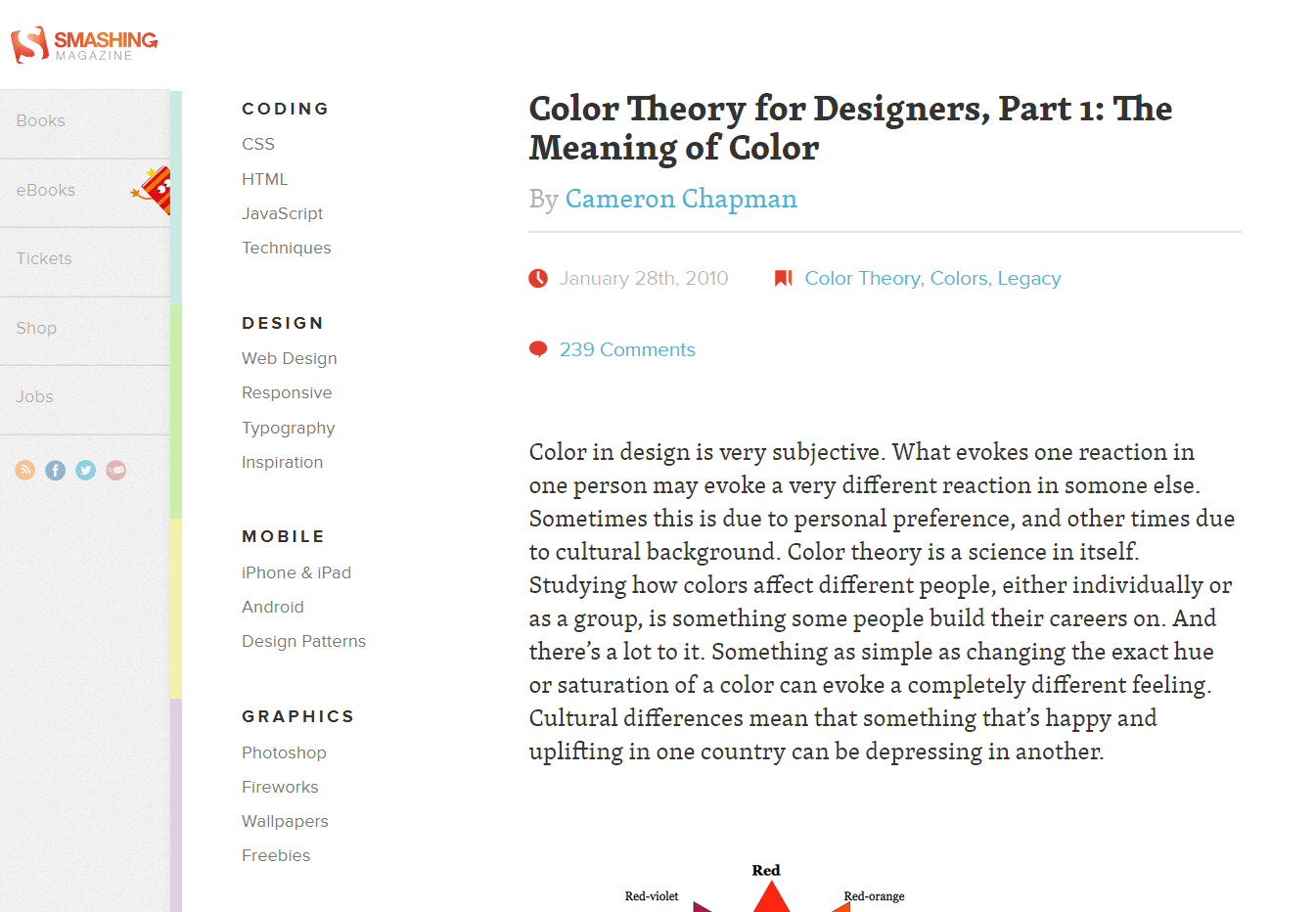
Digital designers interested in honing their color skills can benefit from Smashing Magazine’s “Color Theory for Designers” . The entire tutorial can be completed in about 90 minutes and is free. The information is presented through three lessons: The Meaning of Color, Understanding Concepts and Terminology, and Creating Your Own Color Palettes.”> The lessons offer a wealth of insights for graphic designers on the use of color, richly illustrated with real-world examples of effective use of color in sites, presentations and logos. Readers will also enjoy some professional tips on using colors and color schemes to improve legibility, establish a mood or guide user interactions.
6. Udemy: Oil/Acrylic Painting Techniques and Color Theory
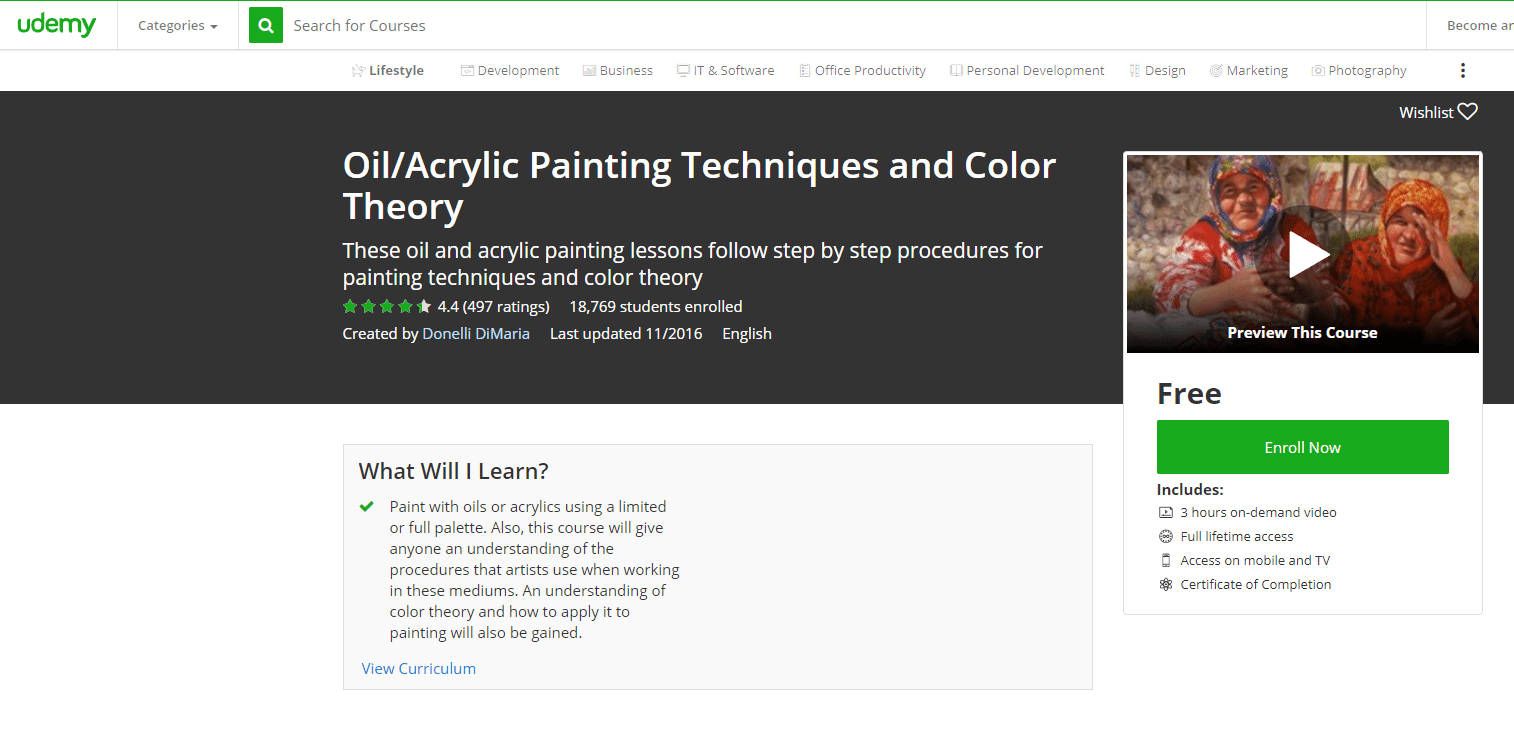
For painters, color is crucial, and Udemy’s Oil/Acrylic Painting Techniques and Color Theory is an excellent resource for translating color theory into practical techniques. This free tutorial consists of a 3-hour video lecture, covering color terminology and skills related to color. Students learn classical approaches color selection, mixing, and application, and can watch three separate technical demonstrations: Classical Color Layering, Alla Prima Painting, and Plein Air Painting.
7. Udemy: Colors for Data Science A-Z; Data Visualization Color Theory
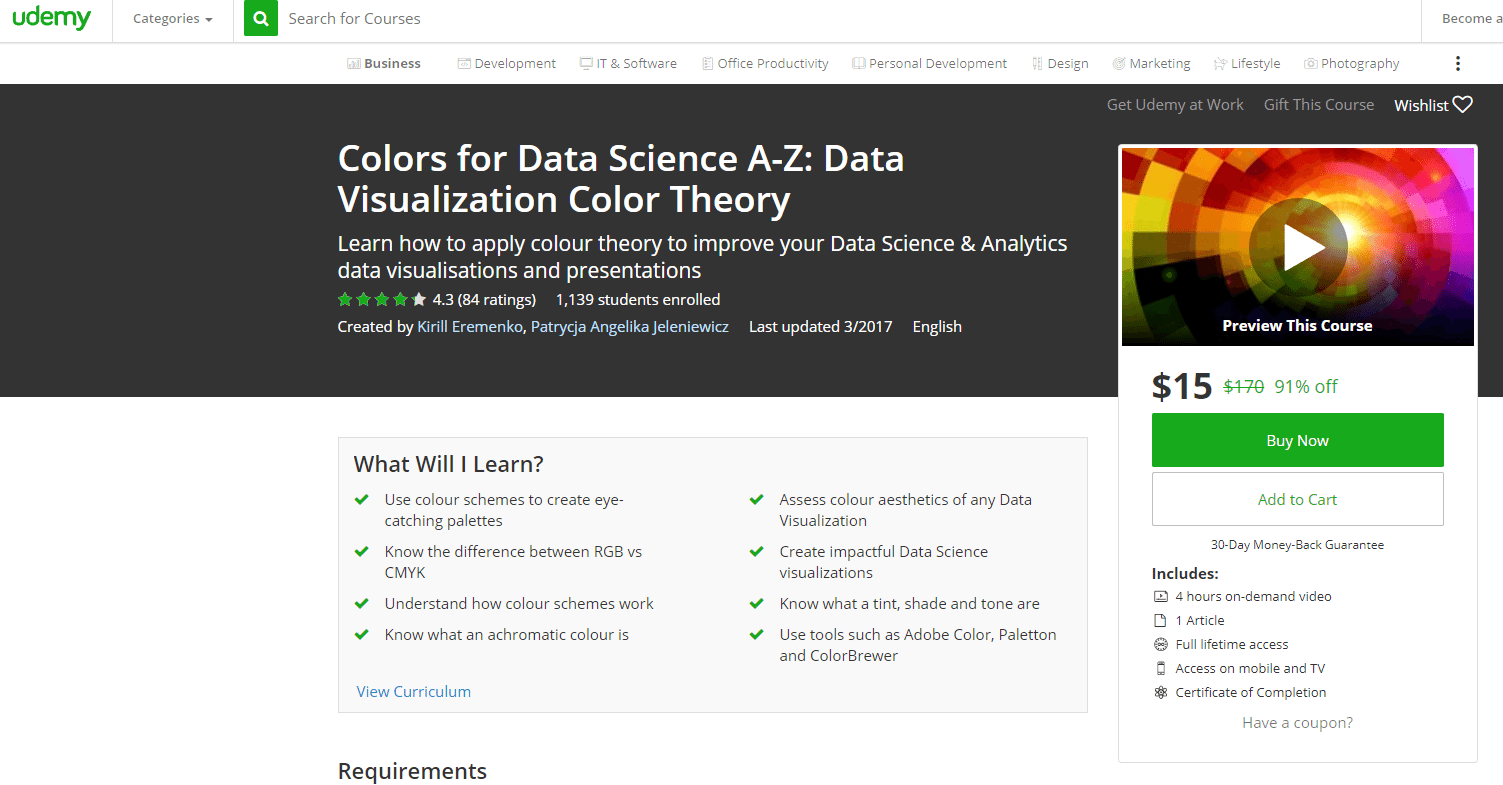
Another useful lesson in color from Udemy is Colors for Data Science A-Z; Data Visualization Color Theory . While covering many of the same topics in color as other tutorials in this section, this course is specifically geared towards the needs of data scientists, who face the challenge of translating quantitative insights into terms that outside professionals can understand and apply. Strong visual presentations are key to making the mathematical end of data science clear to laypeople, and, as Udemy’s tutorial makes clear, color plays a major role in making abstract concepts clear and engaging. The course takes the form of video lessons taught jointly by an artist and a data scientist. Six topics are covered: Introduction, Color Theory, Colors and Emotions, Color Tools, Color Schemes and Real-World Data Challenge. The course costs $170 and the video lecture series lasts 4 hours.
8. Udemy: Master Color in Photoshop CC
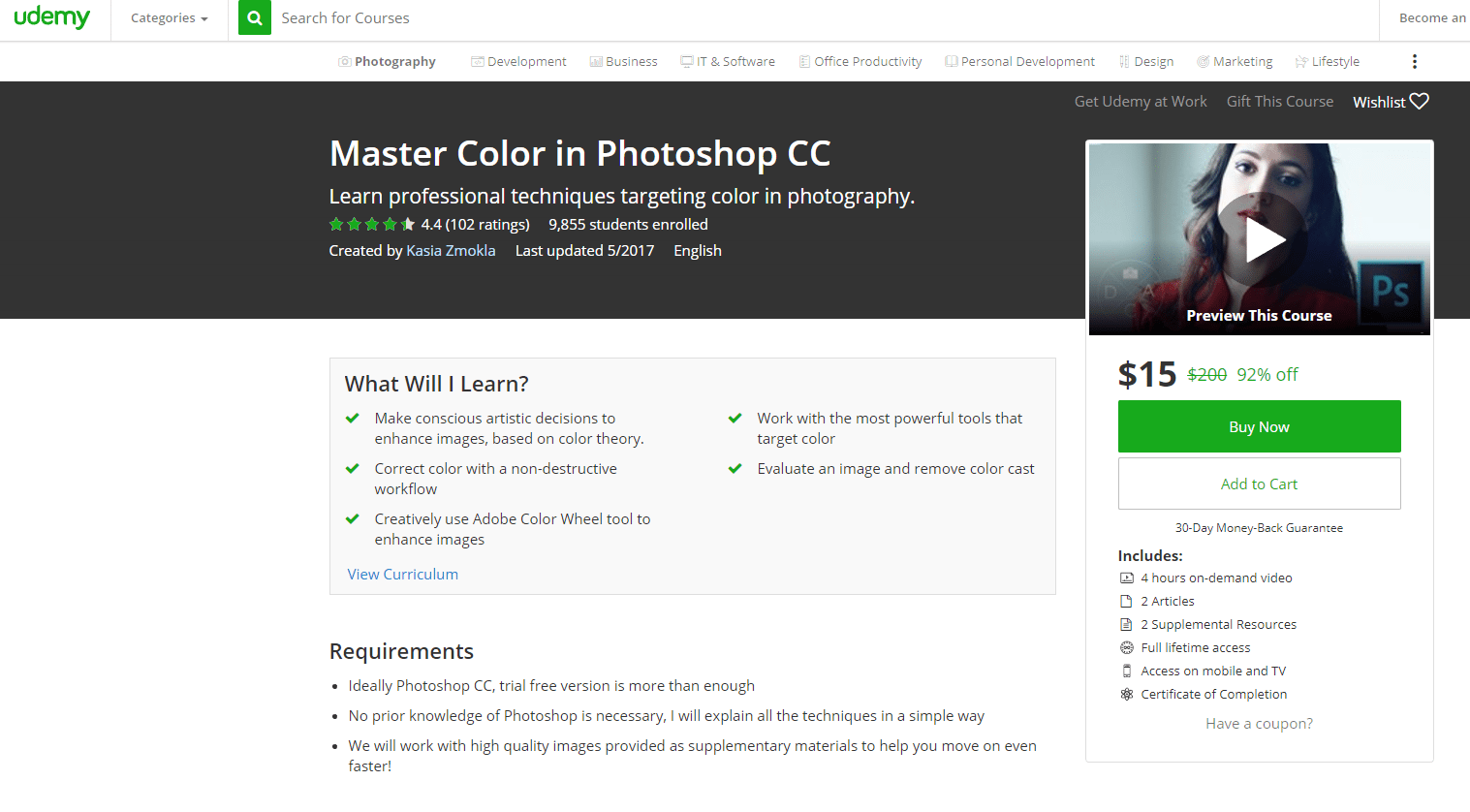
Photoshop is still the gold standard for raster graphics and images, and Udemy’s”Master Color in Photoshop CC”> can quickly get you started in using the many color tools the program affords. The course is presented in 41 brief video lectures totaling 4 hours, and includes several hands-on exercises. The program costs $200.
Users learn basic color theory and how to apply these concepts to make conscious artistic decisions. The lectures also cover creating a constructive workflow and enhancing existing images through the use of Photoshop’s many color tools. Users will, of course, need to have at least a free trial version of Photoshop CC installed in order to follow along with the lessons.
9. Future Learn: The Power of Color
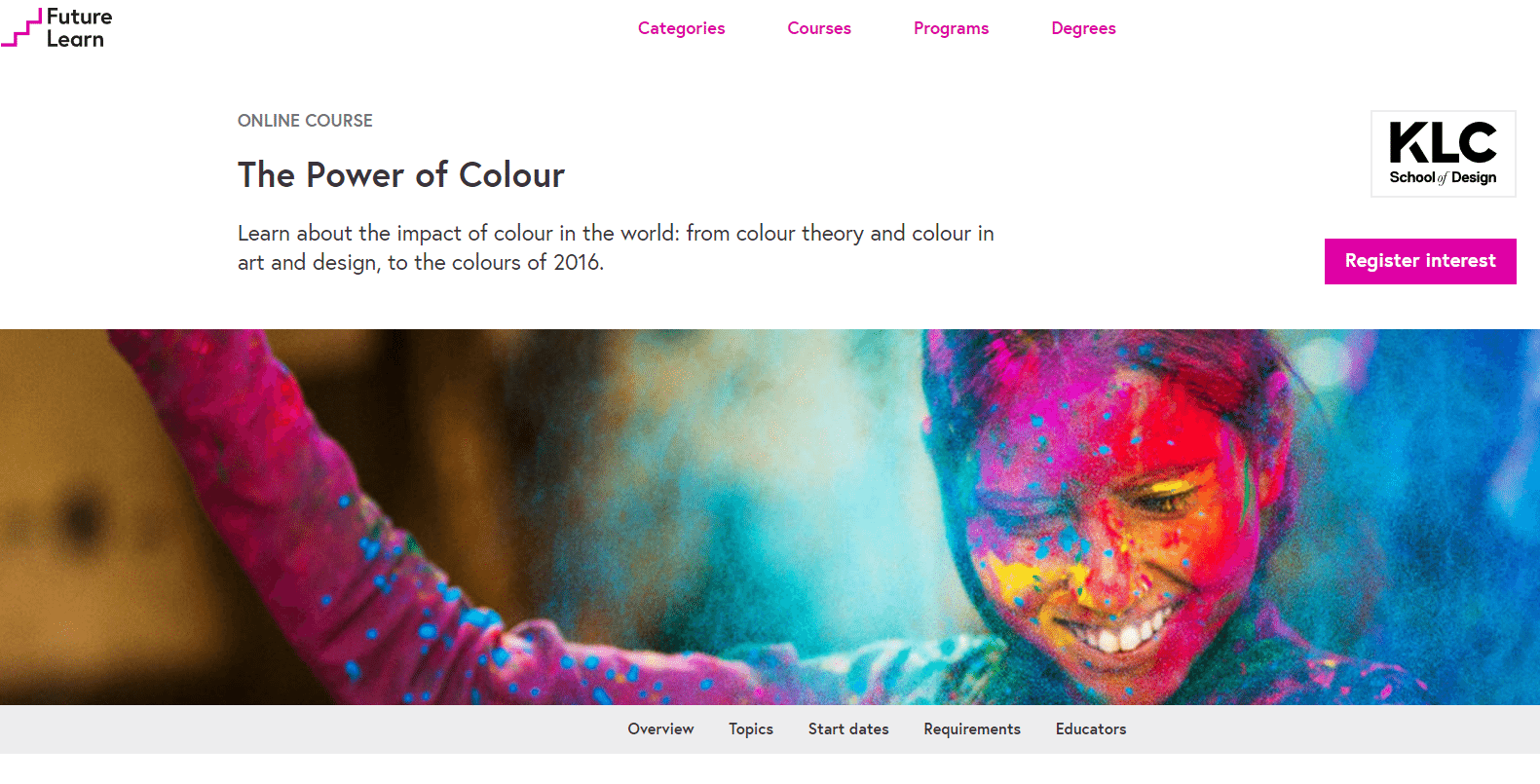
Taught by an interior designer, this tutorial from Future Learn,”The Power of Color”> gives a notably broad perspective on color and its many applications. The program lasts 4 weeks, with 3 hours of coursework per week, for a total of 12 hours of content. While the majority of color tutorials are presented as text references or on-demand video, this course, like a traditional art class, has a set start and end date. The course is free, with the option to purchase a $30 Statement of Participation or a $50 Certificate of Achievement and Transcript. The comprehensive curriculum begins with the most fundamental color topics, such as the physics of light, the physiology of the eye, and the mechanics of perception. Subsequent lessons cover color terminology, color selection and combination strategies and palette creation. The series concludes with reflections on the emotional and cultural connotations of color, along with current color trends.
10. Coursera: Fundamentals of Graphic Design
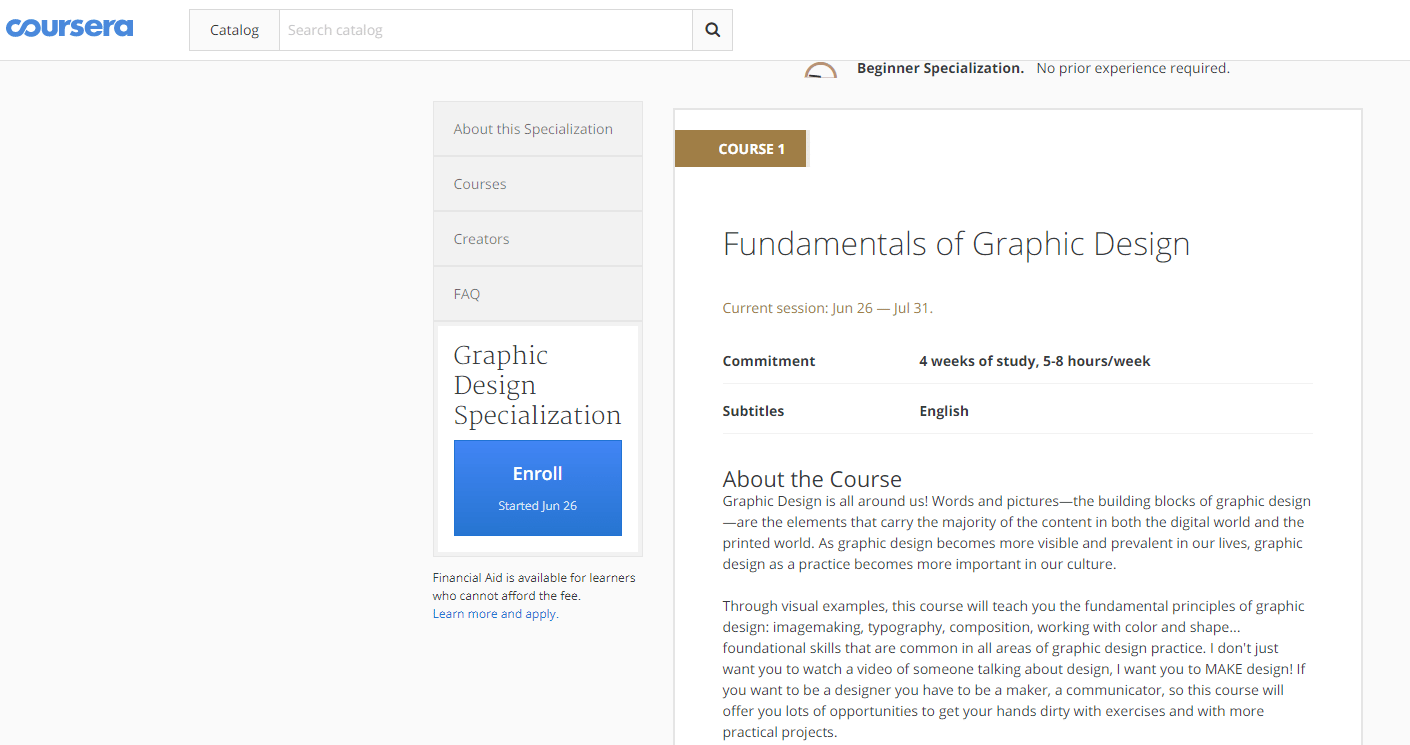
Designers ready to really expand their skill set can dive into Coursera’s”Fundamentals of Graphic Design”> . Coursera presents high-quality digital classes, grouped into multi-course specializations, from top schools, such as Stanford, Duke and John Hopkins. The”Fundamentals of Graphic Design”> course is presented by CalArts, and is part of the”Make Compelling Design”> specialization. The class consists of video lectures, along with readings, quizzes, exercises, graded assignments and practical projects. As with Future Learn, Coursera’s lessons are conducted like a traditional art class, with set start and end dates instead of on-demand content. The class consists of 4 weeks of study, with 5-8 hours of coursework per week, making”Fundamentals of Graphic Design”> the most time-intensive and in-depth tutorial in this ranking. As with all Coursera classes, there is an associated fee of $29-$99 which can be waived for students unable to pay.
The comprehensive course covers many topics in graphic design, including Typography and Image Making, with Fundamentals of Shape and Color addressed in the third week. Other classes in the 5-course”Make Compelling Design”> specialization include Typography and Image Making.
